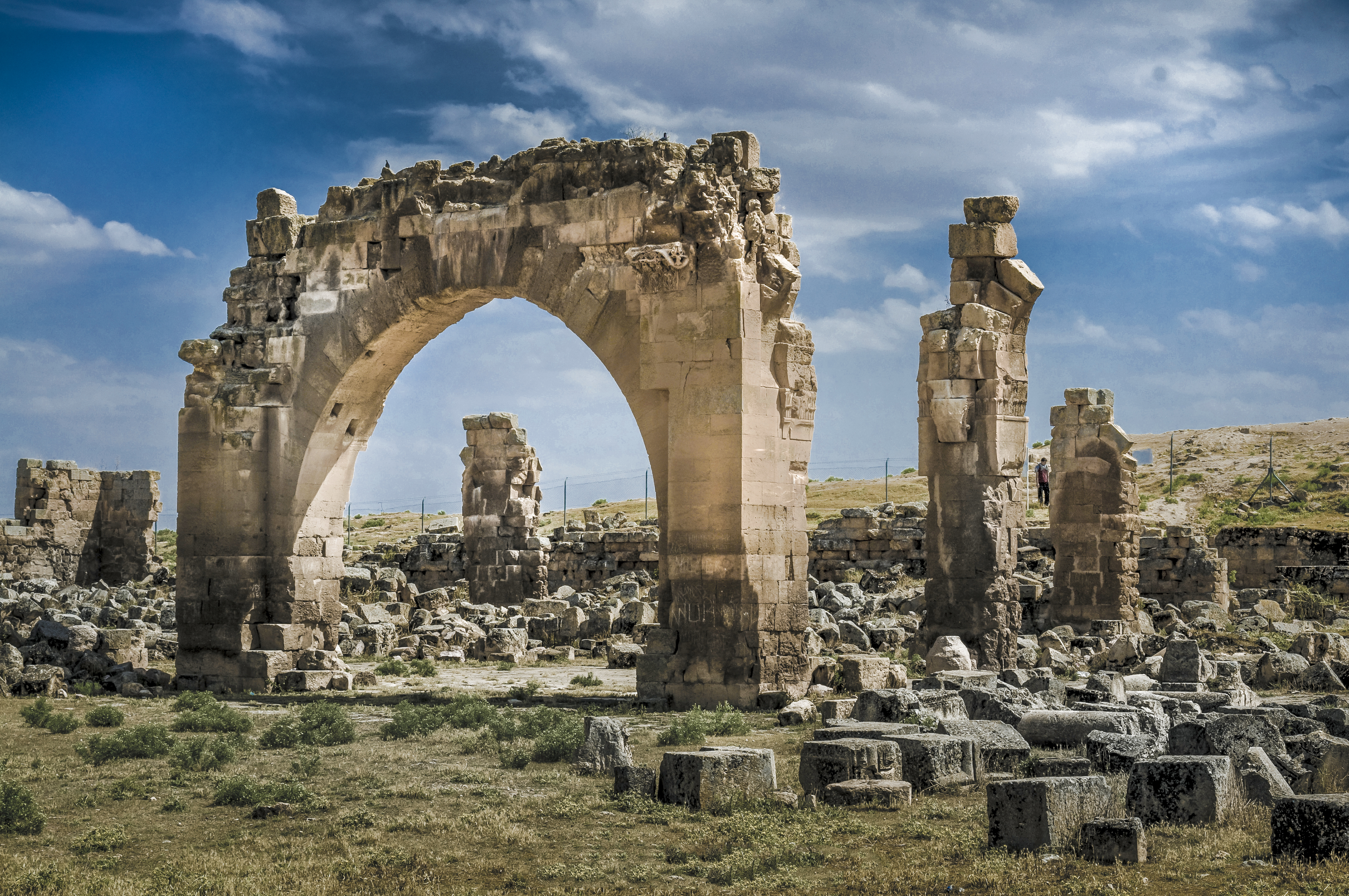
Harran
Harran[a] is a municipality and district of Şanlıurfa Province, Turkey.[2] Its area is 904 km2,[3] and its population is 96,072 (2022).[1] It is approximately 40 kilometres (25 miles) southeast of Urfa and 20 kilometres (12 miles) from the Syrian border crossing at Akçakale.
"Carrhae" redirects here. For the battle, see Battle of Carrhae.
Harran was founded at some point between the 25th and 20th centuries BC, possibly as a merchant colony by Sumerian traders from Ur. Over the course of its early history, Harran rapidly grew into a major Mesopotamian cultural, commercial and religious center. It was made a religiously and politically influential city through its association with the moon-god Sin; many prominent Mesopotamian rulers consulted with and renovated the moon-temple of Ekhulkhul in Harran. Harran came under Assyrian rule under Adad-nirari I (r. 1305–1274 BC) and became a provincial capital often second in importance only to the Assyrian capital of Assur itself. During the collapse of the Assyrian Empire, Harran briefly served as the final capital of the Neo-Assyrian Empire (612–609 BC).
The city continued to be prominent after the fall of Assyria and experienced varying degrees of foreign cultural influence during its time under the Neo-Babylonian (609–539 BC), Achaemenid (539–330 BC), Macedonian (330–312 BC) and Seleucid (312–132 BC) empires. During classical antiquity Harran was often contested between the Roman and Parthian (later Sasanian) empires. In 53 BC Harran was the site of the Battle of Carrhae, one of the worst military defeats in Roman history. The Harranian moon cult of Sin proved to be enduring and lasted long into the Middle Ages, known to have existed as late as the 11th century AD. Harran was captured by the Rashidun Caliphate in 640 and remained an important city in the Islamic period. It flourished as a center of science and learning and was the site of both the first Islamic university (the Harran University)[4][b] and the oldest mosque in Anatolia[c] (the Harran Grand Mosque).[6] Harran twice served as a capital city in the Middle Ages, first briefly under the Umayyad Caliphate (744–750) and later under the Numayrid Emirate (990–1081).
The city was conquered by the Mongol Empire in 1260 but was largely destroyed and left abandoned in 1271. Although Harran was kept as a military outpost under some later regimes, it has over the last five centuries mainly been used as a temporary settlement by local nomadic societies. Harran retransitioned into a semi-permanent village settlement in the 1840s but has only recently grown into a permanent town through advancements in local irrigation and agriculture. Harran was a Turkish district until 1946, after when it was downgraded to a sub-district of the Akçakale district. It regained its status as a district in 1987.[7] Today, it is a major local tourist spot. The town is particularly famous for its unique beehive houses, which are reminiscent of buildings that were already present at Harran in ancient Mesopotamian times.
Toponomy[edit]
The name Harran is recorded for the city from the earliest documents mentioning it and has remained in continuous use and largely unchanged since ancient times.[8] Harran is mentioned in early cuneiform records of the Sumerians and Hittites as 𒌷𒊮𒆜 (URU.ŠÀ.KASKAL), sometimes shortened to 𒆜 (KASKAL),[9] transliterated as Ḫarrānu(m).[10][11] Ḫarrānu literally means "journey", "caravan" or "crossroad".[4] It is often interpreted as "caravan path"[11] or "intersection of routes and travel".[8] Harran is rendered as ܚܳܪܳܢ (hrn) in Aramaic,[12] חָרָן (Ḥaran) in Hebrew, حَرَّان (Ḥarrân) in Arabic,[13] حران (Harrān) in Ottoman Turkish,[14] and Harran in modern Turkish.[15]
The ancient Assyrians called the city Huzirina.[16] Ḫarrānu was Hellenised to Kárrhai (Kάρραι)[17] in the Hellenistic period.[18] The Romans later Latinised the Greek name into Carrhae.[18][19] Due to the prominence of both Harran and Carrhae in historical literary sources, some scholars use the compound name "Carrhae-Harran" for the ancient city.[20] Under the Byzantine Empire, the city continued to be called Carrhae (Kάρραι) but was also sometimes referred to as Hellenopolis (Eλληνóπoλις),[17] "city of the pagan Greeks", in reference to the strong pagan traditions there.[4][10]
Geography and climate[edit]
Harran is located in the Southeastern Anatolia Region of Turkey,[96] approximately 40 kilometres (25 miles) southeast of Urfa.[10] Harran is situated 360 metres (1,180 feet) above sea level, which is the lowest point in the surrounding lowland region.[97]
Harran has a hot and dry climate.[8][88] The precipitation rate is rarely more than 40 centimetres.[8] During the summer, Harran experiences significant temperature differences between the days and nights.[98]
Tourism[edit]
The ancient ruins at Harran function like an open-air museum[77] and the town is a popular local tourist attraction,[82] often visited as a day trip from Urfa.[95] Popular attractions include the Harran Culture House[95] and the ruins of the castle and mosque.[77] Prior to 2015, Harran had around two million visitors a year, according to a local tour guide. The Syrian civil war has reduced this to almost zero.[77]